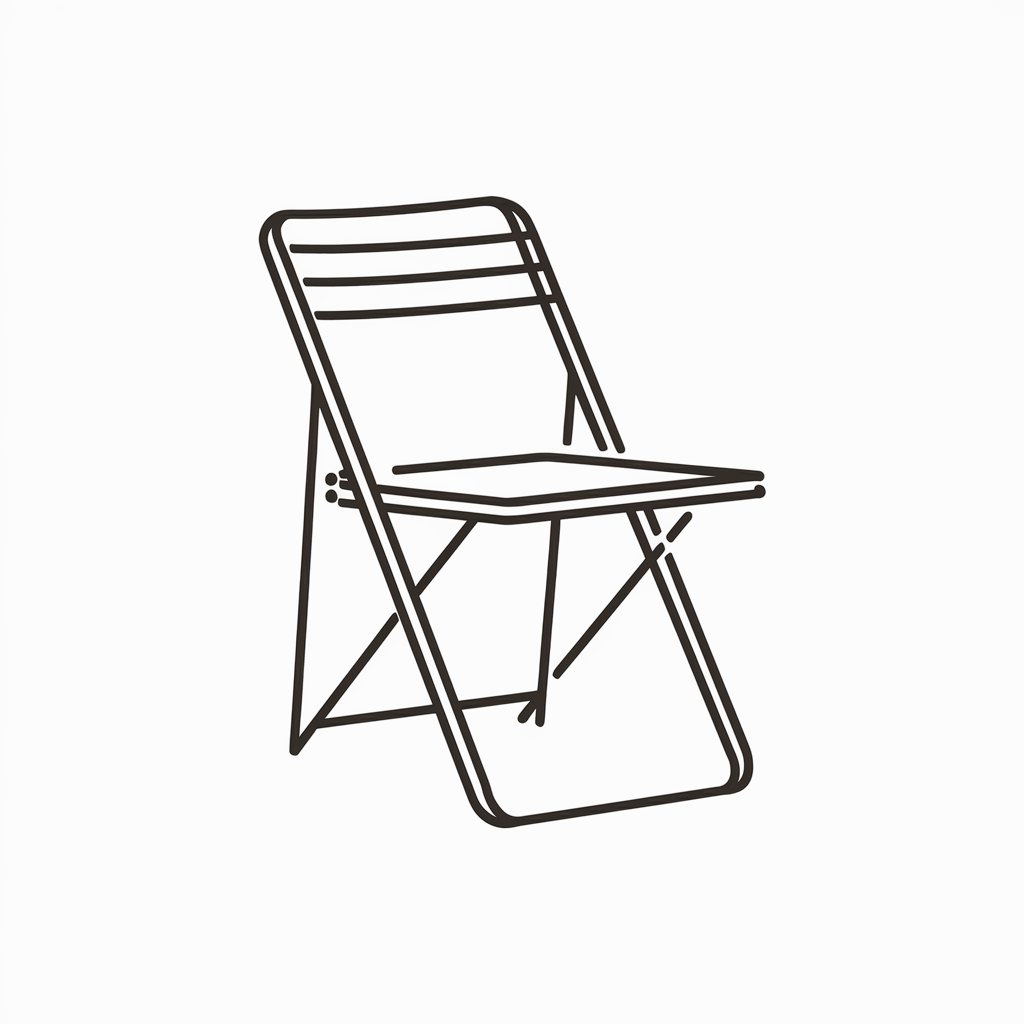
Chairs - Comprehensive Chair Guide

Welcome! I'm here to help you find the perfect chair.
Sit Smart with AI-Powered Chair Advice
Can you recommend a comfortable chair for long hours of work?
What are some stylish yet practical dining chairs?
How do I choose the best ergonomic office chair?
What are the best types of chairs for a cozy living room?
Get Embed Code
Understanding Chairs: Function and Design
At its core, Chairs is an expertise-driven platform focused on the vast world of seating furniture. This includes an in-depth analysis and advisory on various chair types, their designs, ergonomics, and suitability for different settings. From the quintessential ergonomic office chairs designed for long hours of work, to the plush, luxurious armchairs that anchor living room aesthetics, Chairs covers the spectrum. The purpose is to guide users in selecting the right chair that not only complements their space but also supports their health and comfort needs. For instance, selecting an office chair with lumbar support for a home office setup, or choosing a rocking chair that adds a cozy vibe to a nursery while being practical for new parents. Powered by ChatGPT-4o。

Core Functions of Chairs
Ergonomic Assessment
Example
Ergonomic office chairs with adjustable features
Scenario
Helping remote workers find a chair that prevents back pain and enhances productivity through features like adjustable height, lumbar support, and armrests.
Aesthetic Matching
Example
Mid-century modern lounge chairs
Scenario
Advising homeowners on selecting chairs that match their home's decor theme, such as a mid-century modern lounge chair that complements a minimalist living room.
Space Optimization
Example
Stackable chairs for small dining areas
Scenario
Guiding small apartment dwellers in choosing stackable or foldable chairs that maximize their limited dining space without sacrificing style.
Special Needs Accommodation
Example
Chairs with height adjustments for physically challenged individuals
Scenario
Assisting users with special needs in finding chairs that accommodate their requirements, such as height-adjustable chairs for easy accessibility.
Who Benefits from Chairs?
Home Office Workers
Individuals working from home who need ergonomic chairs to ensure comfort and productivity during long working hours.
Interior Design Enthusiasts
Those passionate about home decor and design, looking for chairs that not only serve a functional purpose but also enhance the aesthetic appeal of their space.
Small Space Dwellers
People living in compact spaces who require multifunctional and space-saving seating solutions that do not compromise on style or comfort.
Individuals with Special Needs
Users who require chairs with specific features to accommodate physical challenges, ensuring accessibility and comfort in their daily lives.

How to Use Chairs - A Guide
Start Your Journey
Begin by accessing a comprehensive guide to chairs without the need for signing up or subscribing to premium services. Visit a dedicated platform like yeschat.ai for an engaging, cost-free trial.
Identify Your Needs
Consider what you're looking for in a chair—comfort for long working hours, aesthetic appeal for home decor, or ergonomics for health and productivity. Knowing your priority helps in making an informed decision.
Explore Chair Types
Dive into the vast world of chairs—office chairs, gaming chairs, lounge chairs, and more. Each category offers unique features tailored to specific needs and environments.
Consult Expert Advice
Leverage expert recommendations and advice available on the platform. Utilize filters and search tools to narrow down your options based on your preferences and requirements.
Make an Informed Decision
Compare your top choices by considering factors like material, comfort level, adjustability, and price. Opt for a chair that aligns with your needs, budget, and style preferences.
Try other advanced and practical GPTs
Hiring
Streamlining Recruitment with AI Expertise

Racket Expert
Master Racket with AI-Powered Guidance

Hanukkah
Illuminate Your Hanukkah with AI

GENIUS Novelizer PRO by VOANH
Craft Your Masterpiece with AI

Moral
Navigate ethics with AI-powered clarity.

Knot Bot
Tie knots confidently with AI assistance

Made in America
Empowering American craftsmanship with AI

Aria
Master English with AI Tutoring

Seafood
Explore the ocean's bounty, powered by AI.

Safety Equipment
Empower Safety with AI Insights

MediVisualizer
Bringing medical concepts to visual life.

Notion 智能账本
AI-powered Personal Finance Management

Frequently Asked Questions About Chairs
What makes an office chair ergonomic?
An ergonomic office chair is designed to provide optimal support to the user's body, especially the back, neck, and arms. Key features include adjustable seat height, lumbar support, armrests, and a reclining mechanism to allow for movement and changes in posture throughout the day.
How often should I replace my office chair?
The lifespan of an office chair varies based on its quality and how well it's maintained. Generally, it's recommended to consider replacing your chair every 5 to 8 years, or when you notice significant wear and tear or a decrease in comfort and support.
Can the right chair improve productivity?
Absolutely. A well-chosen chair can significantly impact your comfort and health, which in turn affects your concentration and productivity. An ergonomic chair that promotes good posture and reduces discomfort can help you stay focused and efficient for longer periods.
What's the difference between a gaming chair and an office chair?
Gaming chairs often feature a more striking design with bold colors and a sporty aesthetic, along with thicker padding and reclining capabilities for long hours of gaming. Office chairs tend to focus more on ergonomic features and may have a more subdued, professional appearance suitable for workplace environments.
How do I choose the right chair for my home office?
Consider factors such as the amount of time you'll spend sitting, the level of lumbar support needed, adjustability features, materials, and your home office decor. Balance functionality with aesthetics to choose a chair that not only feels good to sit in but also complements your space.






